Become a Patron!
You are using an out of date browser. It may not display this or other websites correctly.
You should upgrade or use an alternative browser.
You should upgrade or use an alternative browser.
Dual coil single wire build
- Thread starter Randy210
- Start date
State O' Flux
Bronze Contributor
Member For 4 Years
Member For 3 Years
Member For 2 Years
Member For 1 Year
Member For 5 Years
If you have a decent quality digital multimeter (DMM) you can check each side (both with and without coils attached) for individual resistance.
It's usually a small difference in coil tail length, or... you also may have damaged a wire sufficiently to have increased it's resistance.
Don't forget to check your meter for internal resistance, and subtract that from your measurements.
It's usually a small difference in coil tail length, or... you also may have damaged a wire sufficiently to have increased it's resistance.
Don't forget to check your meter for internal resistance, and subtract that from your measurements.
VapeTechnologies
VapeTechnologies LLC Advanced Custom Boxes
VU Donator
Member For 4 Years
Member For 3 Years
Member For 2 Years
Unlisted Vendor
Both coils should be the exact same length and that's a tough task sometimes with low post atty's, same # of wraps and the legs should be even. Also be sure the screws are screwed in as tight as you can get them without stripping or damaging the threads. I can't even tell you how many stripped post screws I've got kicking around. Besides that, you got some nice, tight wraps going on there. Your well on your way for sure.
Here's a few of my single wire dual coil builds just for fun...
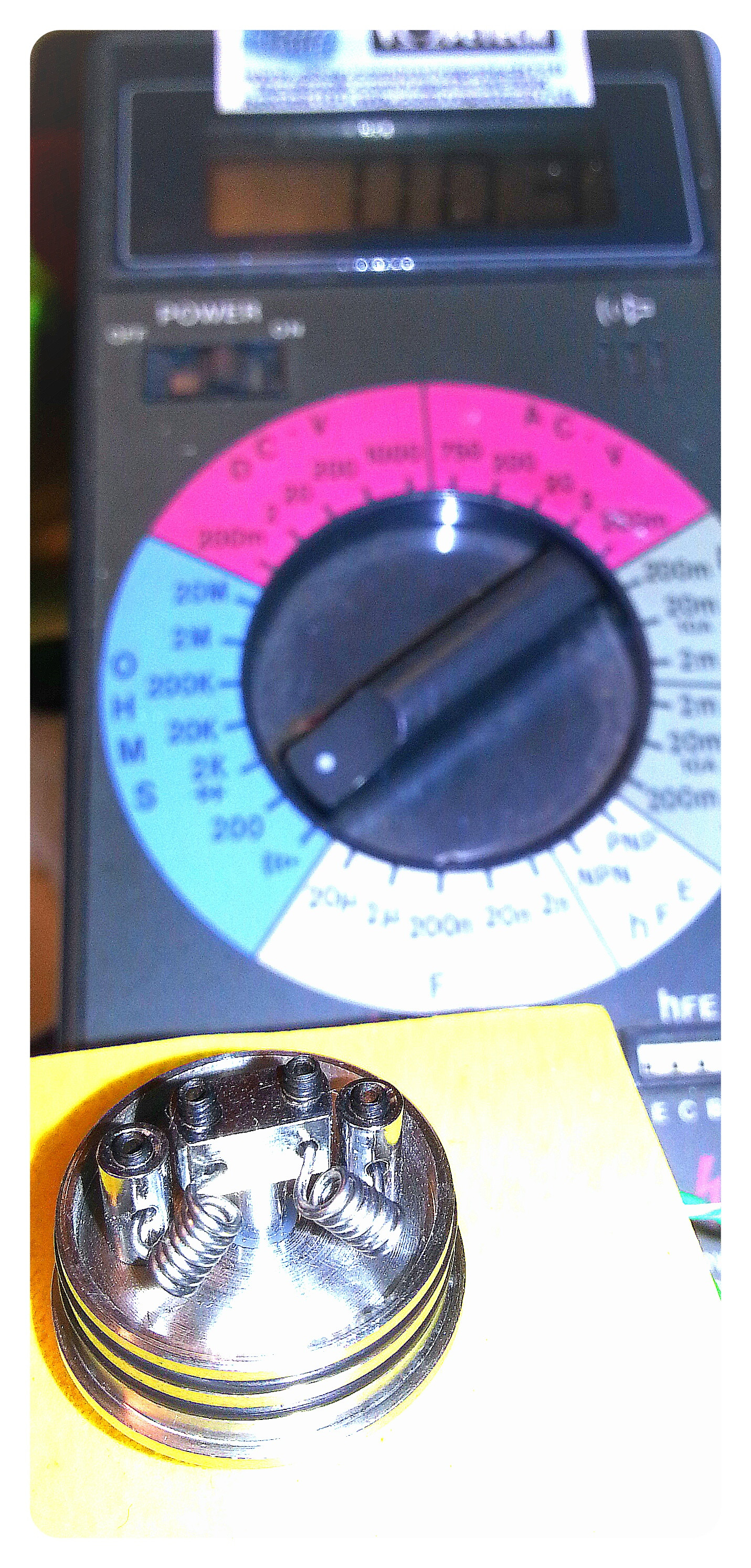
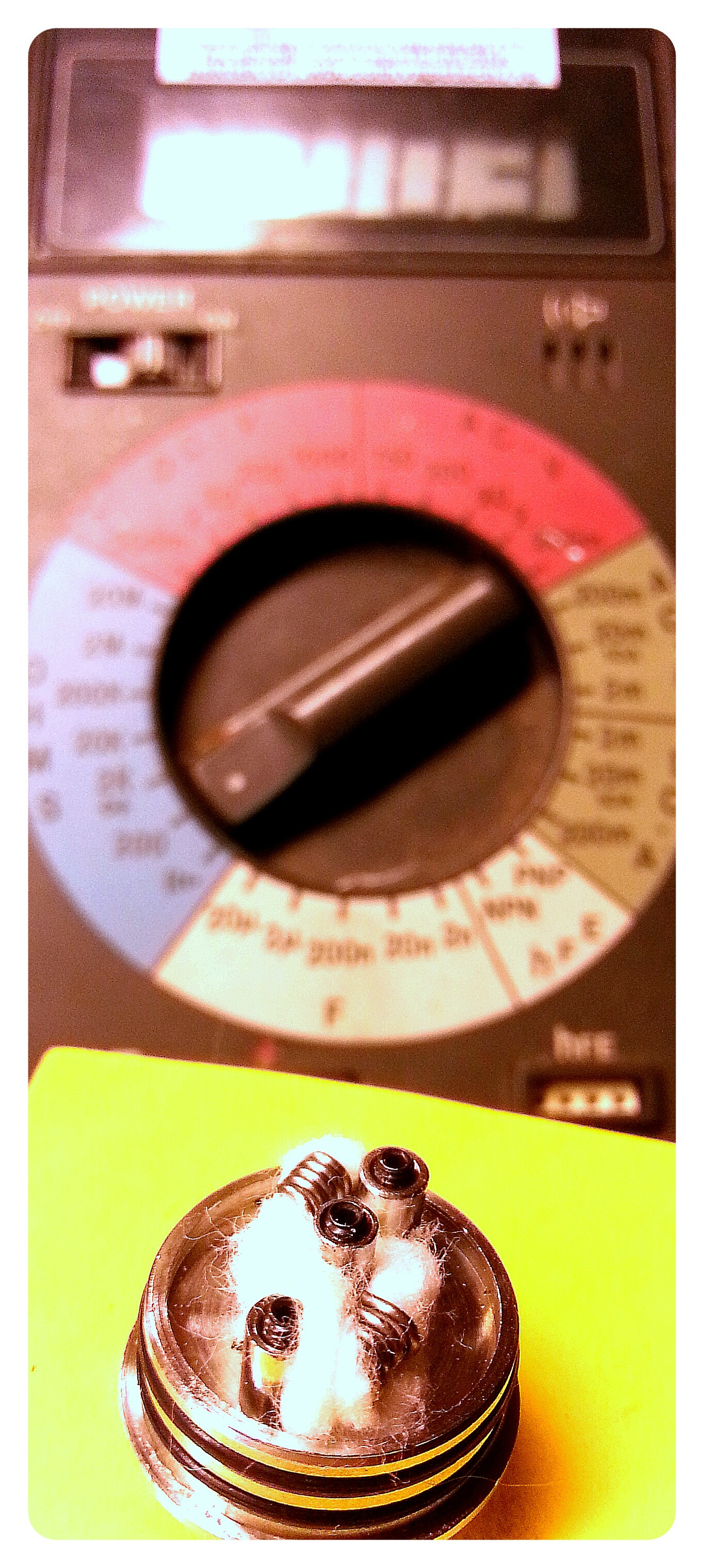
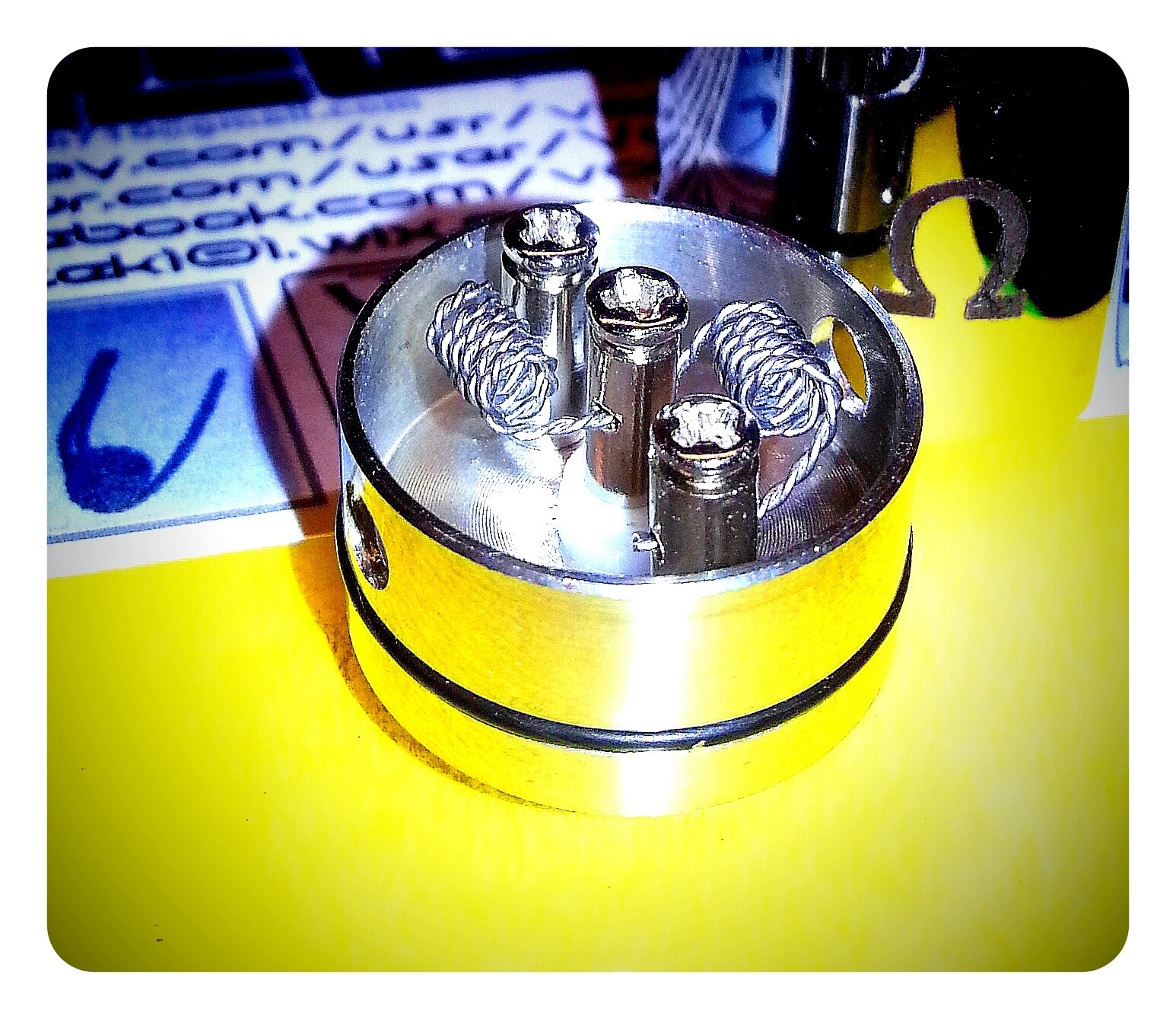
Here's a few of my single wire dual coil builds just for fun...



VapeTechnologies
VapeTechnologies LLC Advanced Custom Boxes
VU Donator
Member For 4 Years
Member For 3 Years
Member For 2 Years
Unlisted Vendor
Nice 
Faceless Vapes
Silver Contributor
Member For 4 Years
Member For 3 Years
Member For 2 Years
Member For 1 Year
Sleeper coil build *
VapeTechnologies
VapeTechnologies LLC Advanced Custom Boxes
VU Donator
Member For 4 Years
Member For 3 Years
Member For 2 Years
Unlisted Vendor
I'm really not sure if there's any benefits to be quite honest, besides showing skill, or maybe if one was super uptight about even distribution but those numbers would be miniscule.. I use to be very active on coilart forums and be so anal about making coils into immaculate pieces of art, but for the last year or so I've stuck with the same 3 wrap/24AWG dual build, it's about as simple as it gets and I'll tell ya, the vapor density is on point. I've done all the twisted, clapton, and sleepers you can imagine and it's fun and all but as far as performance, I don't see much of a difference.Just curious .. what are the benefits of using piece of wire for both coils as apposed to wrapping 2 coils separately
Some people might disagree, and to each is own but I see no difference in all the fancy stuff vs. a nice, simple, tight, 3-wrap X2 build. Well, I do see a difference actually, all the clapton/twisted/fancy stuff would suck down my batteries twice as fast more often than not.. but that's about it.
Here's what I use to do a while back.. but not anymore

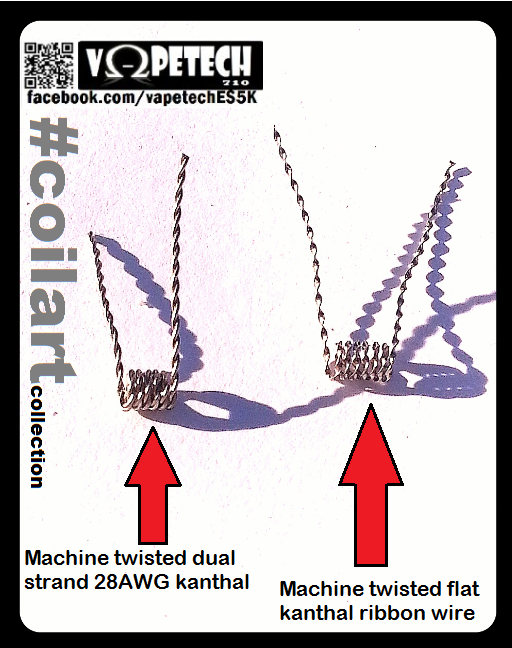
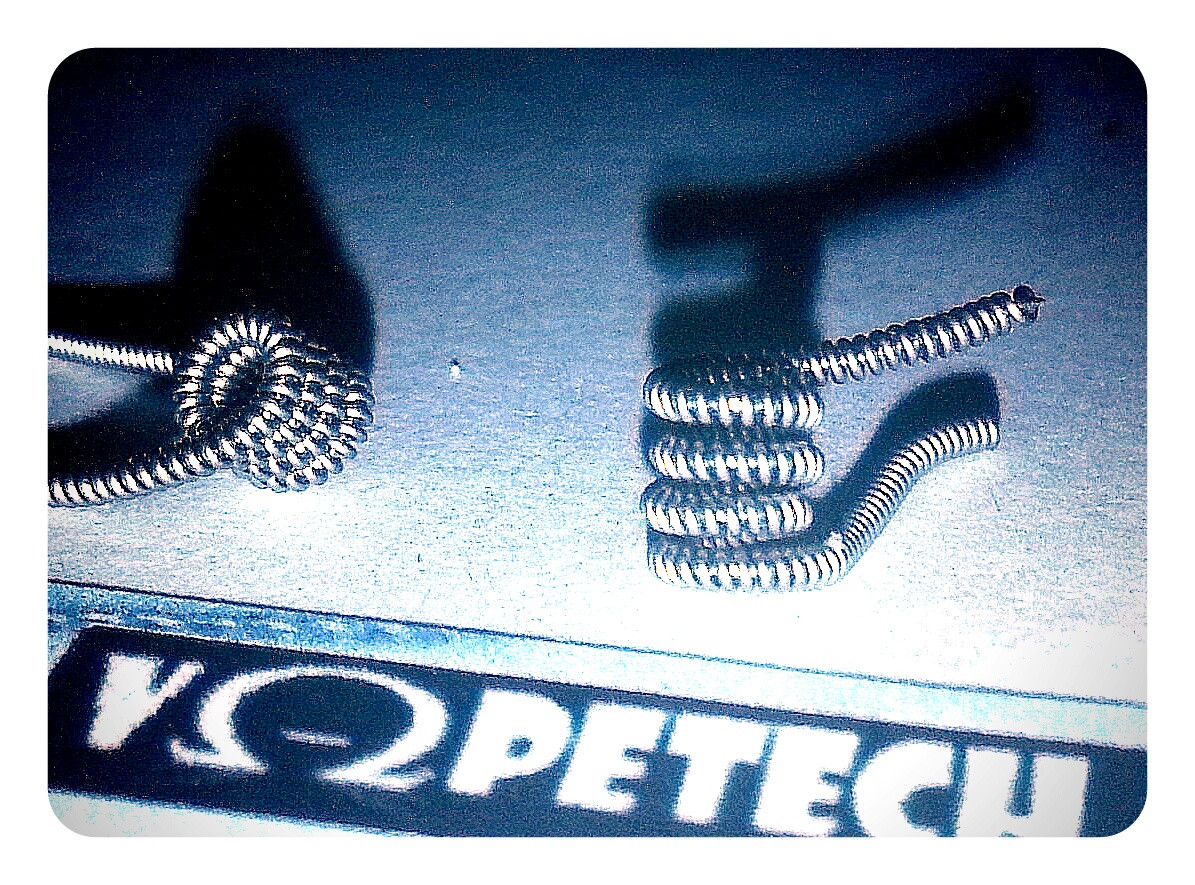

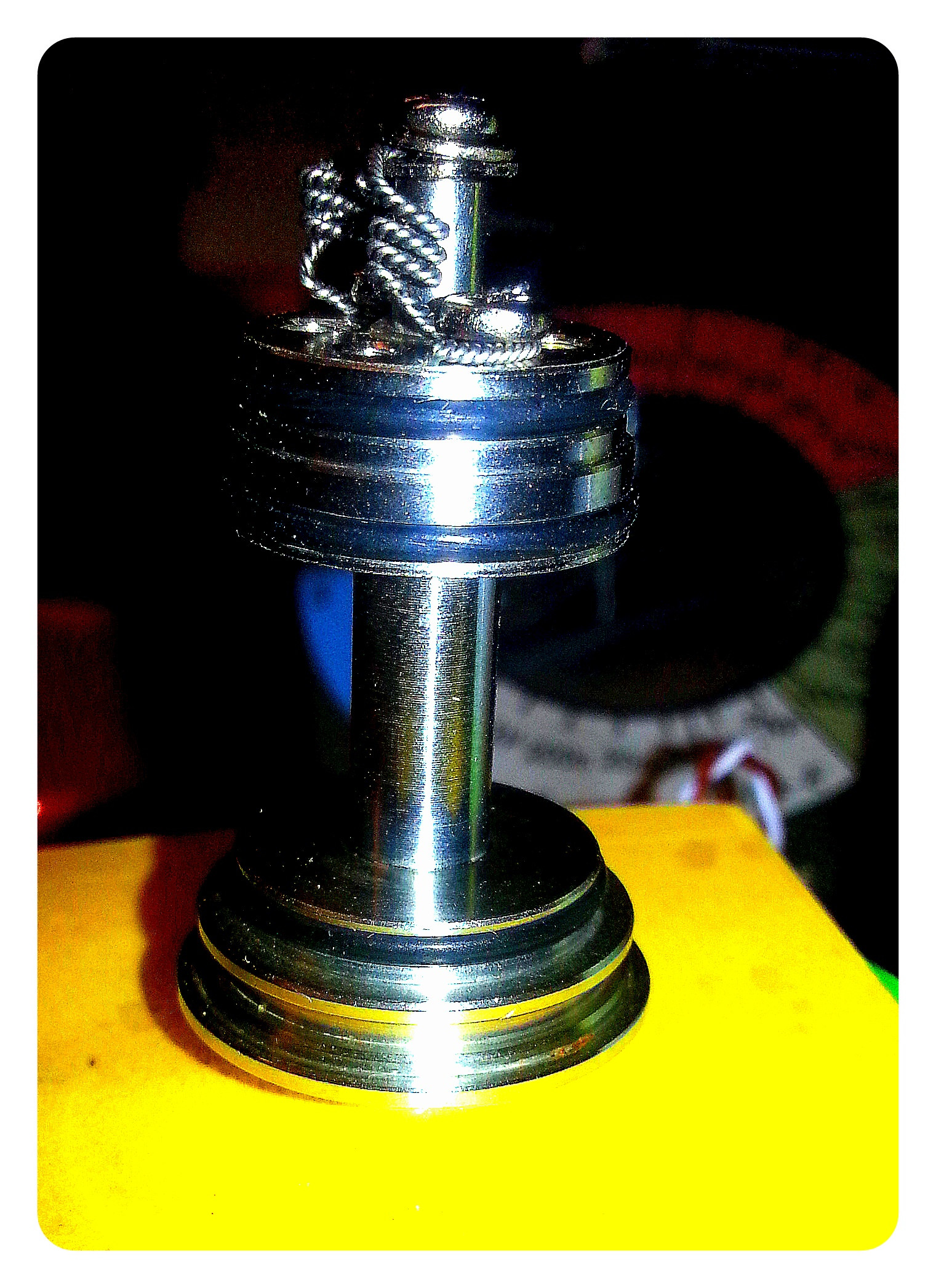

State O' Flux
Bronze Contributor
Member For 4 Years
Member For 3 Years
Member For 2 Years
Member For 1 Year
Member For 5 Years
Two separate pieces of wire will be a parallel dual build. The net resistance will be one half the resistance of a single coil. In other words, two 1.0Ω coils, fit in parallel (each with it's own ground), you divide the value of a single coil (1.0Ω ÷ 2) = 0.5Ω net resistance.Just curious .. what are the benefits of using (one) piece of wire for both coils as apposed to wrapping 2 coils separately
If you have more than two individual wires, it's still "parallel". but you divide the resistance of one coil by the number of wires, to produce the net. A quad (4 wire) parallel at 0.5Ω is made of four 2.0Ω wires. (2.0Ω ÷ 4) = 0.5Ω.
This is the purpose of RDAs that can use multiple, individual wires, to obtain a lower resistance without an excessive wire mass/density (and the lower heat flux value of thicker wire for a given wattage - like a resistance controlled mech output), as well as a rapid "heat capacity" (time-to-temperature).
A single wire, to make multiple coils is called "series". Regardless of the number of individual coils made from a single wire, the resistance is that of one wire.
Why does it matter? Simple. For a given wire gauge and net resistance, with 'X' wattage, the "heat flux" (radiant coil temperature) will be higher with a single vs. a multiple coil build.
Example: Using a mech mod (where resistance and voltage determine wattage output), a 0.6 Ohm single coil made from 24 gauge wire running at the Ohm's law determined value of 29.4 watts, will have a "warm" heat flux of 213 mW/mm². If we build that as a 24 gauge dual parallel, with 0.6Ω net resistance, the heat flux drops to a dismally cold 53 mW/mm².
To obtain a similar heat flux as our 24 gauge single coil, we need thinner wire... 28 to be specific, at 214 mW/mm²... or, if we have a hi-wattage output regulated mod, we can just crank up the wattage of our 26 gauge dual parallel build to 116-117 watts to obtain the 213 mW/mm² that we had to start with.
I actually wrote an article on this (well three articles actually) The first two are found at the end of the second sigline hyperlink below... and the most recent, here.
Faceless Vapes
Silver Contributor
Member For 4 Years
Member For 3 Years
Member For 2 Years
Member For 1 Year
The benefit of a sleeper is if you're building on a RDA with smaller post holes. I personally build all my coils sleepered just cause it makes a better connection. Imo
Try a parallel Build


